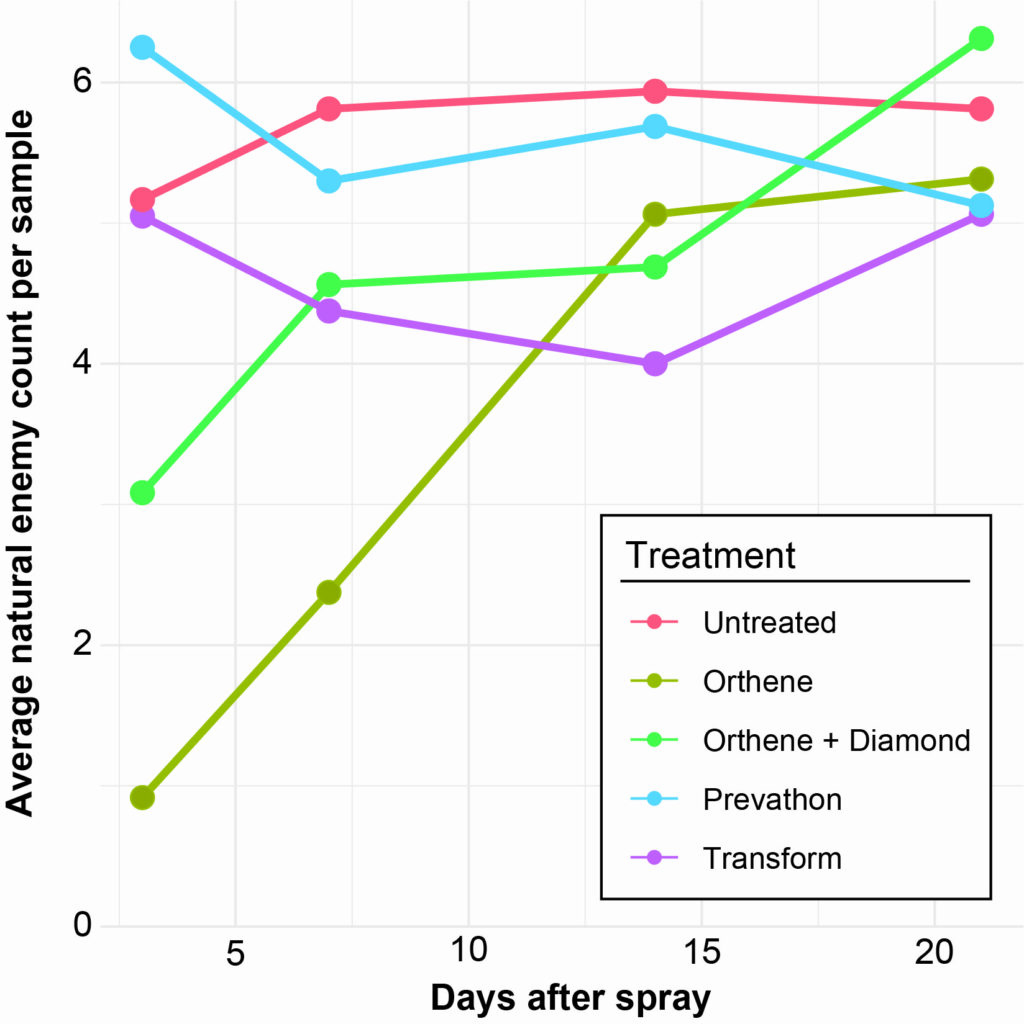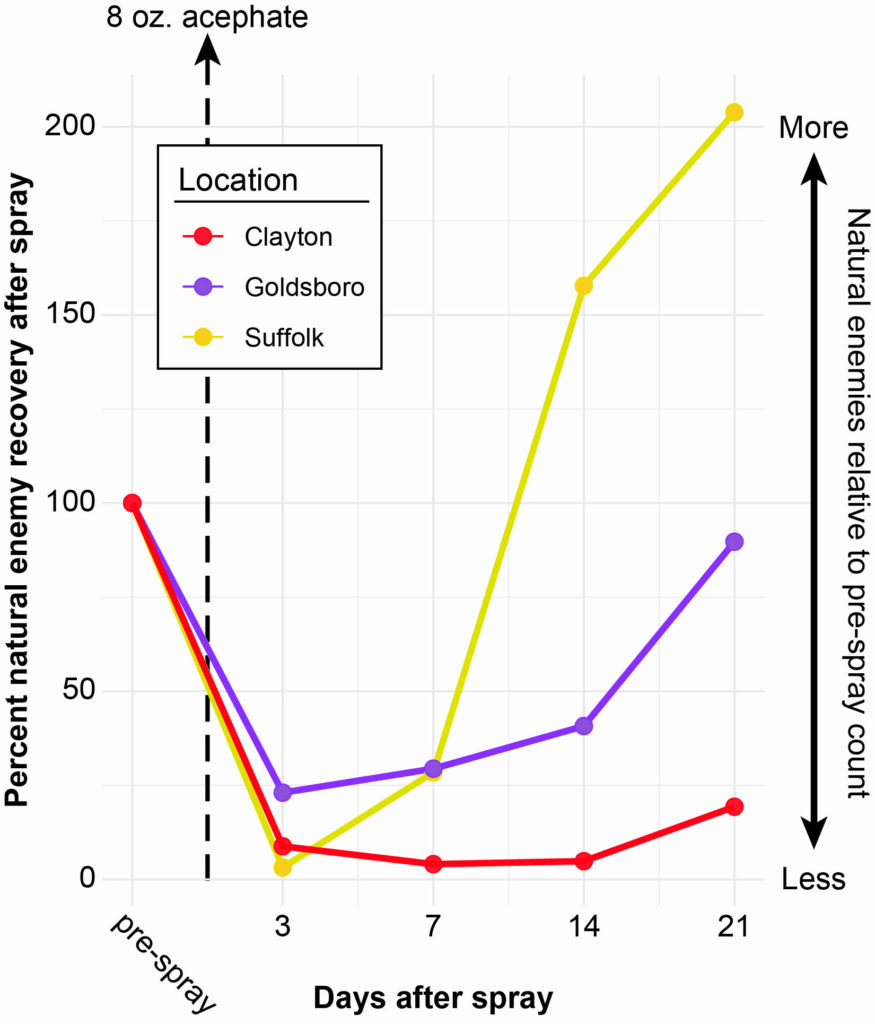Impacts of Plant Bug and Bollworm Insecticides on Natural Enemies
go.ncsu.edu/readext?873546
en Español / em Português
El inglés es el idioma de control de esta página. En la medida en que haya algún conflicto entre la traducción al inglés y la traducción, el inglés prevalece.
Al hacer clic en el enlace de traducción se activa un servicio de traducción gratuito para convertir la página al español. Al igual que con cualquier traducción por Internet, la conversión no es sensible al contexto y puede que no traduzca el texto en su significado original. NC State Extension no garantiza la exactitud del texto traducido. Por favor, tenga en cuenta que algunas aplicaciones y/o servicios pueden no funcionar como se espera cuando se traducen.
Português
Inglês é o idioma de controle desta página. Na medida que haja algum conflito entre o texto original em Inglês e a tradução, o Inglês prevalece.
Ao clicar no link de tradução, um serviço gratuito de tradução será ativado para converter a página para o Português. Como em qualquer tradução pela internet, a conversão não é sensivel ao contexto e pode não ocorrer a tradução para o significado orginal. O serviço de Extensão da Carolina do Norte (NC State Extension) não garante a exatidão do texto traduzido. Por favor, observe que algumas funções ou serviços podem não funcionar como esperado após a tradução.
English
English is the controlling language of this page. To the extent there is any conflict between the English text and the translation, English controls.
Clicking on the translation link activates a free translation service to convert the page to Spanish. As with any Internet translation, the conversion is not context-sensitive and may not translate the text to its original meaning. NC State Extension does not guarantee the accuracy of the translated text. Please note that some applications and/or services may not function as expected when translated.
Collapse ▲Cotton is squaring and moving toward bloom across the state, which means it’s time to plan for mid- to late-season insect pests. Our two major pests in July and early August are tarnished plant bugs (Lygus) and bollworm. Over the past few years, we have posted on scouting thresholds and insecticide rotation programs (View our cotton scouting guide; view new bollworm thresholds; Check out our Regional Insecticide Recommendations for Plant Bugs).
Although choosing the right insecticide based on efficacy and cost is important, we also need to think about natural enemies as another part of Integrated Pest Management for NC cotton. For decades, entomologists have cautioned using broad-spectrum insecticides just before bloom because they tend to clear out natural enemies that attack bollworm and budworm eggs/larvae. Killing natural enemies can trigger more sprays after an outbreak of pests.
Over the past several years, we have been evaluating the effects of common mid-season insecticides for their effect on natural enemies found in bloom-stage cotton (e.g., minute pirate bugs, ladybugs, lacewings) (Fig 1.). We have always known that insect predators can be an important component of pest control; however, prior to our study, we did not have much information about how newer cotton insecticides impact natural enemy populations.

Figure 1. Big-eyed bug is one of the most common predators in NC cotton (A). Minute pirate bug consuming a thrips on a cotton bloom (B). Note the similarities to tarnished plant bug (C), but tarnished plant bugs have antennae almost as long as their body and their eyes are not as prominent. Photos (A and B) by Tabatha Komar, 2021.
In 2020 and 2021, we put out a series of replicated spray trials testing the impact of insecticides on natural enemy communities at bloom. We found that acephate (Orthene) reduced counts of natural enemies shortly after spraying (Fig. 2). This is not a surprise since many studies have shown that organophosphates like acephate can have this effect.

Figure 2. Average natural enemy count starting 3 days after spraying during first week of bloom. Counts were collected at four locations: Clayton, Goldsboro, Plymouth, and Suffolk VA.
Importantly, we did not see a strong effect of other commonly-used insecticides (Prevathon, Transform) when compared to our unsprayed plots across locations. Focusing on acephate alone, we documented a strong reduction in the total natural enemy abundance at our different locations (Fig. 3); however, the resurgence of populations a week or two after spray suggests that the residual activity is minimal reduction in the populations following a foliar acephate spray during the first week of bloom in 2021.

Figure 3. Average relative impact of acephate on natural enemy count. Counts after spray were divided by the pre-spray natural enemy abundance to show percent reduction in the populations following a foliar acephate spray during the first week of bloom in 2021.
Take home points:
- Many insecticides in the cotton toolbox had minimal impacts on natural enemies in our study.
- Applying acephate close to bloom will kill natural enemies and, in turn, open the door to more bollworm problems.
- For any remaining 2 Bt toxin cotton (e.g., DP1646) avoiding acephate sprays prior to bloom or at bloom will be very important to keep bollworm populations in check because bollworm resistance is common in NC populations.
Data and photos for this project were generated by Tabatha Komar, M.S., Department of Entomology and Plant Pathology, NC State University. We thank Dominic Reisig, Sally Taylor and Sean Malone (Virginia Tech), Jeremy Greene (Clemson), Phillip Roberts (U. Georgia), and Scott Graham (Auburn) for their collaboration on this regional project.
We thank Cotton Inc. and USDA-Biotechnology Risk Assessment Grant Program for funding this work.


